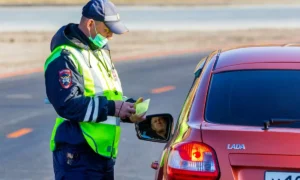White-collar crime refers to financially motivated nonviolent crimes committed by business and government professionals during their occupations.
Some key characteristics of white-collar crimes include:
- Committed for financial gain
- Do not involve acts of physical violence against others
- Perpetrators use their expertise and occupation to carry out the crime
- Victims are most often organizations rather than individuals
Common Types of White-Collar Crime
Some common types of white-collar crimes include:
Embezzlement
Embezzlement is the theft of assets (usually money) from an employer by someone in a position of financial trust. For example, a bookkeeper or accountant stealing cash from their company.
Money Laundering
Money laundering is the act of making illegally gained proceeds (usually from drug trafficking or terrorism) appear legal by disguising their source. It involves a series of transactions to cover up or disguise the source and ownership of money.
Tax Evasion/Fraud
Tax evasion or fraud involves lying on tax returns or other documents submitted to the government to pay less taxes than what is owed. This could include underreporting income, inflating deductions, or misrepresenting financial information.
Securities Fraud
Securities fraud involves deliberate deception in the trading of stocks, bonds, or investment contracts to gain an unfair advantage. Common schemes include insider trading, pump-and-dump scams, and false or misleading statements to manipulate share prices.
Telemarketing Fraud
Telemarketing fraud is related to deceptive practices carried out over the phone such as lying about products, costs, services, or some other aspect of a transaction to get people to agree to a sale or pay money.
Healthcare Fraud
Healthcare fraud is when providers deliberately submit false claims to Medicare, Medicaid, and other healthcare programs to gain reimbursement for equipment, services, or medicines that were never provided, were medically unnecessary, or were misrepresented.
Warning Signs of White-Collar Crime
While white-collar crimes are nonviolent, they can still cause significant harm through financial losses.
Here are some potential warning signs:
- Unusual cash payments and withdrawals
- Unexplained expensive assets or luxury purchases
- Missing or falsified records and documents
- Lying or evading questions about job duties or financial operations
- Close associations with known criminals
- Frequent turnover of external auditors
- Complex corporate structures obscuring money flows
Characteristics of White Collar Criminals
While crimes of violence are typically committed impulsively, white-collar crimes are usually premeditated acts. Those who commit these types of financial crimes tend to have certain characteristics:
- Above-average intelligence: Many white-collar criminals hold positions of trust that require analytical thinking and problem-solving skills. Higher IQ allows them to identify loopholes and vulnerabilities to exploit.
- Ego and greed: An inflated ego and desire for wealth and status beyond their means can motivate white-collar criminals to risk breaking the law for financial gain.
- Rationalize criminal behavior: They develop justification for their actions such as feeling entitled or believing they are smarter than the system. This allows them to avoid feelings of guilt.
- Skilled at deception: White-collar criminals are often smooth talkers adept at manipulation and lying. They build relationships through charm to gain respect and conceal criminal schemes.
- Self-control: Unlike most violent criminals who act out of anger or impulsiveness, white-collar criminals maintain self-control and plan meticulously to avoid detection for as long as possible.
- Law-abiding façade: They project an image as a respected member of the community, not someone capable of crime. This helps deflect suspicion and cultivate a reputation that lends credibility to their schemes.
- Seek prestige/status: Luxury purchases and displays of wealth are used to fulfill a need for high social standing and to impress others with success, concealing how it was truly gained through illegal means.
Case Studies of White Collar Crime
Here are the case studies of White Collar Crime:
Bernie Madoff
Bernard Madoff was a legendary American fraudster, believed to be the mastermind behind the largest Ponzi scheme in history. Over decades at his firm Bernard L. Madoff Investment Securities LLC, he swindled thousands of investors out of over $64 billion through a sophisticated fake trading operation.
Enron Scandal
Former American energy giant Enron collapsed spectacularly in 2001 under the weight of years of corporate fraud and corruption. Through inflated profits, buried debts, and sham special-purpose entities created to hide losses, top executives had misrepresented the true financial state of the company to the tune of billions.
Health South Fraud
Founded by Richard Scrushy, HealthSouth was once the largest provider of outpatient surgical services in America. However, from 1996-2003 its top executives, including Scrushy, attempted to artificially inflate HealthSouth’s earnings through an accounting fraud that reached approximately $2.7 billion. This led to the bankruptcy of the entire company.
Theranos Scandal
Elizabeth Holmes launched blood-testing start-up Theranos with promises of breakthrough new technology that did not exist. For over a decade, the company concealed that its signature blood analyzer could only perform a limited number of tests via conventional means. When the falsehoods were exposed, it emerged as one of largest frauds in Silicon Valley history, destroying a $9 billion valuation.
Detection, Investigation, and Punishment of White Collar Crimes
Because white-collar crimes often involve complex financial schemes and determined efforts to conceal illicit activities, uncovering them can be challenging. However, investigators do have certain tools at their disposal:
Forensic Accounting
Skilled forensic accountants can analyze financial records such as tax filings, bank statements, and accounting ledgers to identify discrepancies, irregular transactions, or other red flags indicating possible fraud.
Wiretaps and Electronic Surveillance
With proper court approval, law enforcement may monitor phone calls, emails, and electronic records for evidence of planning, executing, or covering up white-collar crimes.
Undercover Operations
The FBI and other agencies sometimes run sting operations, sending undercover agents to pose as potential victims or partners in crime to gather first-hand evidence through recorded interactions.
Whistleblowers
People on the inside who observe wrongdoing and come forward to report it can provide valuable leads and insider knowledge to investigators. Rewards are often given to incentivize help from whistleblowers.
Leniency for Cooperation
Prosecutors may offer reduced charges or sentencing to lower-level perpetrators in exchange for their testimony and assistance in building a case against more senior individuals.
When sufficient evidence has been gathered, white-collar criminals may face penalties including fines, restitution to victims, probation, house arrest, or incarceration depending on the nature and severity of their crimes.










